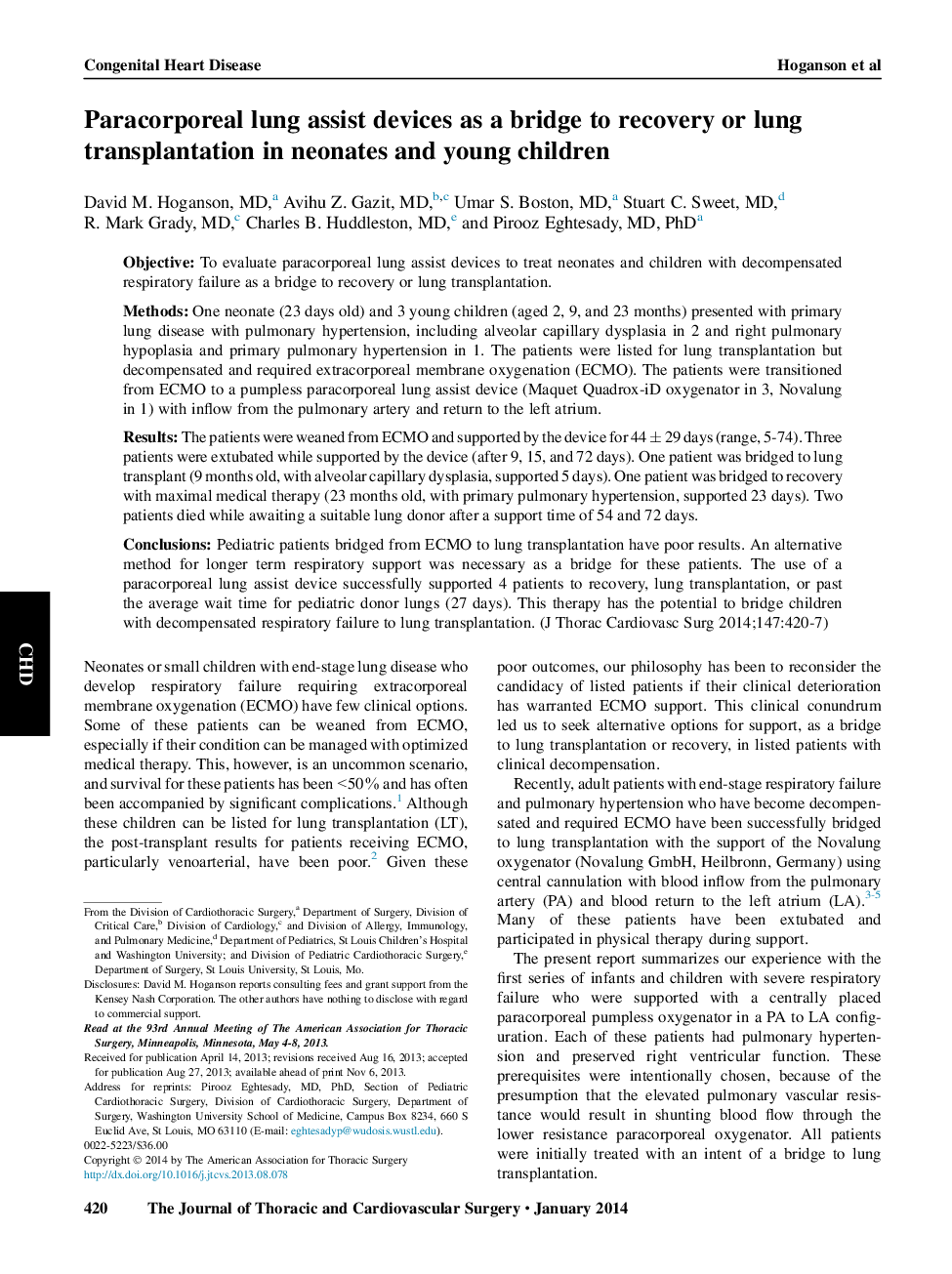| Article ID | Journal | Published Year | Pages | File Type |
|---|---|---|---|---|
| 2980623 | The Journal of Thoracic and Cardiovascular Surgery | 2014 | 8 Pages |
ObjectiveTo evaluate paracorporeal lung assist devices to treat neonates and children with decompensated respiratory failure as a bridge to recovery or lung transplantation.MethodsOne neonate (23 days old) and 3 young children (aged 2, 9, and 23 months) presented with primary lung disease with pulmonary hypertension, including alveolar capillary dysplasia in 2 and right pulmonary hypoplasia and primary pulmonary hypertension in 1. The patients were listed for lung transplantation but decompensated and required extracorporeal membrane oxygenation (ECMO). The patients were transitioned from ECMO to a pumpless paracorporeal lung assist device (Maquet Quadrox-iD oxygenator in 3, Novalung in 1) with inflow from the pulmonary artery and return to the left atrium.ResultsThe patients were weaned from ECMO and supported by the device for 44 ± 29 days (range, 5-74). Three patients were extubated while supported by the device (after 9, 15, and 72 days). One patient was bridged to lung transplant (9 months old, with alveolar capillary dysplasia, supported 5 days). One patient was bridged to recovery with maximal medical therapy (23 months old, with primary pulmonary hypertension, supported 23 days). Two patients died while awaiting a suitable lung donor after a support time of 54 and 72 days.ConclusionsPediatric patients bridged from ECMO to lung transplantation have poor results. An alternative method for longer term respiratory support was necessary as a bridge for these patients. The use of a paracorporeal lung assist device successfully supported 4 patients to recovery, lung transplantation, or past the average wait time for pediatric donor lungs (27 days). This therapy has the potential to bridge children with decompensated respiratory failure to lung transplantation.
